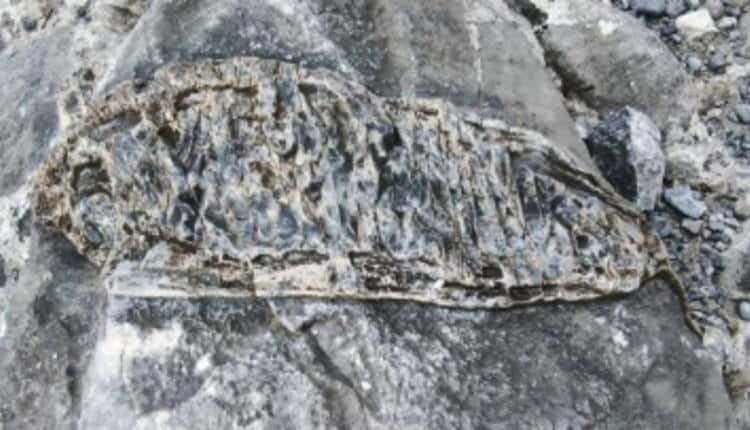
A fish fossil from millions of years ago was accidentally discovered at the Samaria Gorge in Crete.
It is well known that Crete was once submerged beneath the waters of a prehistoric sea, as evidenced by the numerous fossilized shells found even on mountain peaks, some of which are displayed in the Rethymno Museum.
However, the discovery of a fossilized fish is a rare occurrence, especially when found deep within the Samaria Gorge.

Professor Ilias Louloudakis from Rethymno publicized his discovery, stating:
“For over thirty consecutive years, I have visited Agia Roumeli, and I have traversed the route up to the Samaria Gorge ‘Portes’ (Gates) many times. This year, following a tip, I discovered a fish fossil imprinted on a natural rock, located shortly after the guard post.
Thousands of visitors pass through this spot every year, unaware that beneath their steps lies a silent relic of an ancient sea. The fossil, approximately thirty centimeters long, bears clear imprints of the organism’s body and fins.
A fish fossil in the Samaria Gorge was also discovered in 2017.
“It would be important for the relevant authorities to take action to protect and highlight the fossil—with a simple marking or informational sign—before it is lost to the erosion of time and the footsteps of passersby,” Louloudakis said.
Fish fossil is proof of Crete’s past as a seabed
The discovery of a fossilized fish in the Samaria Gorge, nestled within the Lefka Ori (White Mountains) of Crete, serves as direct and powerful evidence of a massive geological phenomenon: the uplift of the seabed.
Millions of years ago, the area that is now Crete was part of the floor of the ancient Tethys Ocean. The skeletal remains and shells of marine organisms (like corals, shellfish, and, more rarely, fish) died and settled on the seabed.
The transformation began due to the movement of tectonic plates. Specifically, the African plate is subducting (sliding) beneath the Eurasian plate (to which Greece belongs).
This continuous collision exerted immense lateral forces. The seabed layers—the limestones containing the fossils—began to compress, fold, and be slowly pushed upwards. This process is known as orogenesis (mountain building).
Over millions of years, this phenomenon lifted the ancient seafloor rocks, forming the high mountain ranges of Crete, such as the White Mountains, causing marine fossils to be found at elevations of thousands of meters.
Once the land rose above sea level, erosion from water (rivers, rain, snow) began to cut deep into the new mountain landscape.
The Samaria Gorge is a massive feature created by the river which, for millennia, has been cutting through the limestone rock as the mountain continued to rise. The deep bed of the gorge today exposes these ancient seafloor layers, revealing “silent relics” like the fossilized fish.
Thus, the fish fossil is the irrefutable proof of Crete’s past as a seabed, before tectonic forces pushed it to the surface and natural forces created the stunning gorge we see today.


